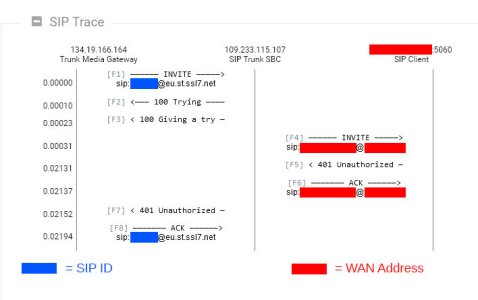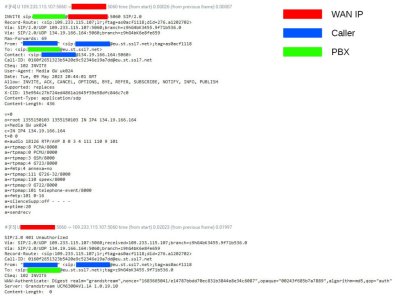DanielCoffey
Regular Contributor
I am having an intermittent issue with only half the audio being present on incoming VoIP calls to my PBX and the VoIP provider is wondering if it is a NAT Mismatch at the ASUS router. I wonder if you could give your opinion on the issue please?
Here is the equipment being used...
Router : ASUS RT-AX86U with Merlin 388.2
Unmanaged Switch : Netgear GS116LP
PBX : GrandStream UCM6300A
Handset : Grandstream WP822 wifi
VoIP Provider : GoTrunk
On the majority of incoming calls I am notified that there is a call, Caller ID is displayed and when I pick up I can hear the caller voice fine. They cannot hear me.
Rarely on an incoming call it works fine with both parties able to hear each other.
On an outgoing call it always works fine with both parties able to hear each other.
On the advice of my VoIP provider I set WAN - NAT Passthrough - SIP Passthrough - Disable. The only effect this had on the issue was that instead of no incoming calls able to hear me, now only most incoming calls had the problem.
When turning on Call Recording at my PBX I can clearly hear audio on both parties so both sides of the audio is present but the caller is not able to hear me.
The opinion of my VoIP provider is that it is a NAT mismatch at the router. Do you agree with this and how might I prove or disprove this suggestion? Anything else I should be checking on the router?
Here is the equipment being used...
Router : ASUS RT-AX86U with Merlin 388.2
Unmanaged Switch : Netgear GS116LP
PBX : GrandStream UCM6300A
Handset : Grandstream WP822 wifi
VoIP Provider : GoTrunk
On the majority of incoming calls I am notified that there is a call, Caller ID is displayed and when I pick up I can hear the caller voice fine. They cannot hear me.
Rarely on an incoming call it works fine with both parties able to hear each other.
On an outgoing call it always works fine with both parties able to hear each other.
On the advice of my VoIP provider I set WAN - NAT Passthrough - SIP Passthrough - Disable. The only effect this had on the issue was that instead of no incoming calls able to hear me, now only most incoming calls had the problem.
When turning on Call Recording at my PBX I can clearly hear audio on both parties so both sides of the audio is present but the caller is not able to hear me.
The opinion of my VoIP provider is that it is a NAT mismatch at the router. Do you agree with this and how might I prove or disprove this suggestion? Anything else I should be checking on the router?



